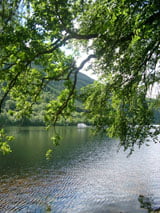Culicoides Impunctatus, otherwise known as the Scottish midge, is a force to be reckoned with. These ferocious wee beasties are tiny and almost invisible to the naked eye at about 1mm in length, but there’s strength in numbers and a swarm of midges is the last thing you want to encounter on your holiday in Scotland!
Know Your Enemy
Midge season runs from June to August but the number of midges about can vary from year to year based on various factors such as the severity of the previous winter. They occur more in the north and west of Scotland than in the south and east. Midges are most prevalent at dawn and dusk, they don’t like strong sunlight (bit like vampires). You won’t be bothered by them on a windy day as their attack squads only operate in still conditions. They are often to be found in woodland and by water rather than on exposed hill tops. They prefer dark clothing to light, and are said to prefer tall men and overweight women!
Prevention
There are lots of theories on how to best steer clear of the Scottish midge. Midge repellent creams and ointments are sold in all good chemists. If you prefer a more natural alternative, citronella and eucalyptus oils are recommended. If you are sitting out at dusk then citronella candles (widely available) can help a bit. Netting midge hoods are to be found on sale through the Highlands. Cigarette and pipe smoke (while obviously not too good for your lungs) is a fairly effective deterrent. Any good anti-histamine cream will stop the itch if you do get bitten.
A daily midge forecast is published here.
Related articles: The Weather in Scotland

Related posts
Whoops! No connected account found. Try connecting an account first.

